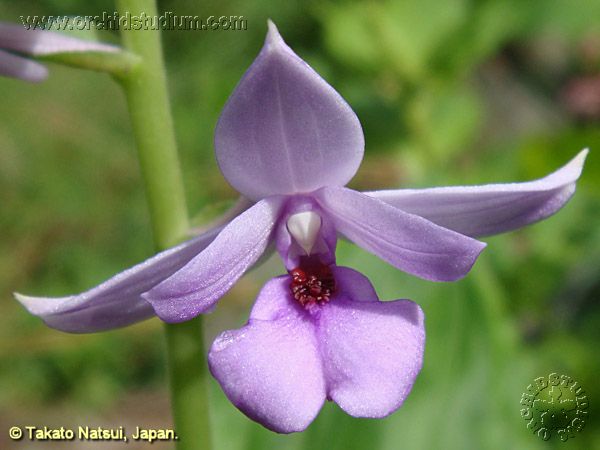Calanthe masuca or Calanthe sylvatica or The Forest-Dwelling Calanthe

Calanthe sylvatica falls into the category of evergreen plants, those that require semi-shaded humus-rich soils as on the slopes of woodlands.
There are two main types of Calanthe in cultivation, deciduous and evergreen. The evergreen types have no rest period and should be kept somewhat damp all year.The deciduous types comprise one of the most satisfactory groups of all orchids, with inflorescences that bloom over a long period of time in the late autumn and winter. They grow well with cattleyas, where the bright light and warm
calanthe they are warm and hot growing orchids, so they do not need cool and cold temperatures to thrive and bloom. They are orchids from shady places, so they don’t need extremely high light levels as needed for Vanda orchids.
They are terrestrials, so they need a substrate for terrestrial orchids with sphagnum, cocoa chips, medium bark, perlite, but some grow them in common soil
watering is the only difference between evergreen and deciduous Calanthe – evergreen Calanthes need the same care all year round, while deciduous Calanthes have short dry dormancy, when they drop their leaves off, so in this case you simply have to stop watering and fertilizing at all until a new growth is visible. They are very easy and forgiving orchids, and it’s a pity that they are not so popular as could be.
Calanthe make a good pot plant for shaded patio area. Grow them in large pots Ensure the plants are kept cool during the summer and are not allowed to dry out at any time. Feed fortnightly with weak fertilizer.
Planting
Calanthe require well-aired and drained soil. Use of some compost rich in humus and pine bark is recommended. In the garden, they can be cultivated under the same conditions as hostas or ferns.
When potting Calanthe plants, the pseudobulbs must be half buried into the potting media.
Be sure to select a large enough pot (minimum diameter 30-40cm) in order to avoid impeding the development of the new peripheral shoots that will appear during the following year.
deciduous type
Since these plants are seasonal growers, it is important to maximize the size of the pseudobulb during their summer growth period by frequent applications of water and fertilizer. Once the pseudobulbs have matured, gradually reduce watering until leaves fall, when water should be withheld altogether. The broad leaves can be subject to spider mite, so keep humidity high and leaves clean. When necessary, apply insecticides.
The young Calanthe shoots appear and fully deploy their leaves as of April. Their flowering is optimal in May. Following the flowering, the foliage, fairly persistent, remains green at least until October before fading and disappearing completely. Calanthes then go into their winter dormancy. The faded leaves can be cut, preserving a stem height of 5 cm. Certain species present persistent foliage all year round.
Over the years and following the successive growth and dormancy cycles, Calanthe not only become stronger but also multiply, thanks to the annual appearance of new shoots.
Evergreen Type
evergreen plants have smaller pseudobulbs or completely lack them in some species
sources
